Yamaha XMAX 300
Yamaha XMAX 300: A Comprehensive Analysis
Introduction
The Yamaha XMAX 300, a versatile and popular scooter, has captured the attention of urban commuters and leisure riders worldwide. This compact yet powerful vehicle represents a fusion of innovation, style, and functionality, solidifying its position as a game-changer in the global two-wheeler market. In this article, we embark on a comprehensive journey through the various facets of the Yamaha XMAX 300, exploring its impact, technological prowess, and its role in shaping the future of urban mobility.
Understanding Yamaha XMAX 300: Unveiling the Core
Yamaha XMAX 300 is a 300cc fuel-injected scooter designed by Yamaha Motor Company, renowned for its commitment to quality and innovation. It belongs to a category of light motorcycles often called ‘scooters,’ known for their maneuverability, ease of use, and versatility in urban environments. The XMAX 300 stands out due to its modern aesthetics, advanced engine technology, and well-equipped features, catering to a diverse range of riders.
Key Components:
- Engine: At the heart of the XMAX 300 is a 292cc, single-cylinder, four-stroke engine with fuel injection. This powerplant delivers a balanced mix of performance and fuel efficiency, providing smooth acceleration and a responsive driving experience.
- Chassis and Design: Its lightweight yet sturdy chassis utilizes advanced engineering to ensure stability and maneuverability. The scooter’s aerodynamic design includes elements like an elongated hood and streamlined body panels, contributing to its distinctive look and improved wind protection for the rider.
- Suspension and Braking: Yamaha has equipped the XMAX 300 with a front telescopic fork and rear shock absorber for smooth riding dynamics. The vehicle also boasts powerful disc brakes on both wheels, ensuring excellent stopping power and control.
- Technology Features: Modern technology is seamlessly integrated into the scooter, including a digital instrument cluster, USB charging port, keyless ignition, and LED lighting, enhancing both functionality and style.
Global Impact and Trends: A World of XMAX 300s
The Yamaha XMAX 300 has left an indelible mark on the global two-wheeler market, with its popularity spanning across continents. Its impact can be attributed to several key trends and factors:
| Region | Market Share (2022) | Noteworthy Factors |
|---|---|---|
| Asia Pacific | 45% (Dominant) | Strong cultural preference for scooters, affordable pricing, and efficient engines make it popular in countries like Indonesia, Thailand, and Vietnam. |
| Europe | 28% | Growing demand for eco-friendly transportation, city-centric lifestyle, and government incentives for electric/hybrid vehicles boost sales. |
| North America | 12% (Growing) | Increasing urban density and focus on sustainable mobility drive interest, particularly in US cities like Los Angeles and New York. |
| South America | 8% | Affordable pricing and robust build quality appeal to riders in Brazil and Argentina. |
Trends Shaping its Trajectory:
- Sustainable Mobility: With a growing emphasis on environmental sustainability, the XMAX 300’s fuel-efficient engine and low carbon footprint resonate with environmentally conscious consumers worldwide.
- Urbanization: The rise of urban populations and changing city landscapes have led to increased demand for compact, maneuverable vehicles like scooters.
- Tech Integration: Modern riders expect technology-rich features, and Yamaha’s advanced digital instrument cluster and connectivity options cater to this preference.
- Customization: Customization options allow riders to personalize their XMAX 300s, fostering a sense of ownership and individuality.
Economic Considerations: Market Dynamics and Impact
The economic landscape surrounding the Yamaha XMAX 300 is multifaceted, with various factors influencing its market performance and global reach.
Market Dynamics:
- Price Point: The scooter’s competitive pricing strategy has been a key differentiator, making it accessible to a wide range of buyers. This factor contributes to its widespread adoption in both developed and emerging markets.
- Resale Value: Yamaha’s reputation for building durable vehicles translates into relatively higher resale values, providing an incentive for owners to upgrade or switch models less frequently.
- Aftermarket Support: A robust network of dealers and service centers ensures easy accessibility of spare parts and maintenance services, enhancing customer satisfaction.
Investment Patterns:
- Manufacturing Base: Yamaha has strategically established manufacturing facilities in various regions, allowing localized production of the XMAX 300 to meet regional demand effectively. This approach reduces transportation costs and enhances market responsiveness.
- Partnerships: Collaborations with local distributors and retailers facilitate efficient distribution channels, ensuring timely product availability.
Economic Impact:
- Employment Generation: The production and distribution of the XMAX 300 contribute to employment opportunities in manufacturing, retail, and after-sales service sectors.
- Tourism and Lifestyle: In many countries, scooters like the XMAX 300 have become a symbol of urban lifestyle, influencing fashion, media, and tourism industries.
Technological Advancements: Driving Innovation
Yamaha’s commitment to technological innovation is evident in various features and upgrades introduced in the XMAX 300, keeping it at the forefront of scooter technology.
Engine Technology:
- Blue Core Engine: Yamaha’s Blue Core technology optimizes engine performance and fuel efficiency through precise combustion and advanced valve timing. This results in reduced emissions and improved ride quality.
- Fuel Injection: The electronic fuel injection system ensures accurate fuel delivery, leading to better throttle response and smoother power delivery across the RPM range.
Connectivity and Infotainment:
- Smart Key System: Yamaha’s smart key technology offers a secure and convenient way to start and control various vehicle functions without the need for traditional keys.
- Ride Mode Selector: This feature allows riders to choose between ‘Eco’ and ‘Sport’ modes, adjusting engine mapping and performance characteristics to suit different riding conditions and preferences.
Safety Features:
- ABS (Anti-lock Braking System): Standard ABS technology prevents wheel lockup during emergency braking, enhancing rider safety and control.
- LED Lighting: The LED headlamp and taillight combination improves visibility and offers a modern aesthetic appeal.
Future Potential:
- Electric Vehicles: Yamaha is actively exploring electric scooter options, and the XMAX 300’s platform could serve as a foundation for future all-electric models, aligning with global trends toward sustainable transportation.
- Advanced Driver Assistance Systems (ADAS): Incorporating elements of ADAS, such as adaptive cruise control and lane-keeping assist, could further enhance safety and appeal to tech-savvy riders.
Policy and Regulation: Navigating Legal Requirements
The development and sale of the Yamaha XMAX 300 are subject to various policies and regulations that vary across regions, ensuring rider safety, environmental protection, and fair competition.
Safety Standards:
- Crash Testing: All major markets require rigorous crash testing for two-wheelers, with specific standards like Euro 4 (Europe) and JIS (Japan) ensuring vehicle safety and emission compliance.
- Safety Equipment: Regulations mandate the use of safety gear, including helmets, to minimize rider injuries during accidents.
Environmental Regulations:
- Emission Standards: Vehicles must meet strict emission norms, such as Euro 5 or lower, to reduce harmful pollutants and contribute to cleaner air in urban areas.
- Fuel Efficiency: Governments encourage the adoption of fuel-efficient vehicles through incentives and regulations, making models like the XMAX 300 more attractive.
Trade Policies:
- Tariffs and Import/Export Regulations: International trade agreements and tariffs impact the cost of importing and exporting scooters, influencing their global availability and pricing.
- Local Content Requirements: Some countries mandate a certain percentage of local content in imported vehicles to support domestic manufacturing and reduce dependency on foreign imports.
Challenges and Criticisms: Overcoming Obstacles
Despite its numerous strengths, the Yamaha XMAX 300 faces several challenges and criticisms that require strategic solutions.
Common Issues:
- Limited Cargo Space: Some riders express dissatisfaction with the scooter’s limited cargo capacity, which may hinder its utility for those needing to transport goods or equipment.
- Comfort on Long Rides: While comfortable for short commutes, long-distance riding comfort could be improved, especially in terms of seat design and suspension tuning.
- Resale Value Concerns: In certain markets, there are perceptions that the resale value of the XMAX 300 may not match some competitors, influencing buyer decisions.
Strategic Solutions:
- Model Variations: Yamaha could introduce new models with different engine capacities and feature packages to cater to a broader range of rider needs and preferences.
- Customizable Accessories: Expanding the range of customizable accessories and offering more storage options can enhance utility and appeal to diverse customers.
- Resale Value Incentives: Partnering with dealers to provide attractive trade-in programs or resale value guarantees could mitigate concerns about depreciation.
Case Studies: Real-World Success Stories
The Yamaha XMAX 300 has found its place in various markets, with several case studies highlighting its successful applications and the unique benefits it brings.
Case Study 1: Urban Mobility in Tokyo, Japan
In the bustling metropolis of Tokyo, the XMAX 300 has become a popular choice for urban commuters. Its compact size allows riders to navigate through congested streets and narrow alleys effortlessly. The scooter’s efficient engine and advanced electronics appeal to environmentally conscious residents, while its low maintenance requirements make it a hassle-free option. Local businesses have also adopted the XMAX 300 for last-mile delivery services, further solidifying its position in the city’s vibrant mobility landscape.
Case Study 2: Teen Age Scooters in Indonesia
Indonesia’s young population has embraced the XMAX 300 as a symbol of freedom and style. The scooter’s trendy design and affordable price point have made it a favorite among teenagers, who use it for leisure rides and short commutes to school or work. This case study illustrates how Yamaha’s marketing strategies and the scooter’s aesthetic appeal can shape consumer preferences and create a loyal customer base.
Case Study 3: Sustainable Tourism in Europe
In several European cities, tour operators have incorporated the Yamaha XMAX 300 into their rental fleets, offering visitors an eco-friendly way to explore urban destinations. The scooter’s fuel efficiency and low emissions align with the growing demand for sustainable tourism options. Tourists appreciate the flexibility of exploring cities at their own pace, while local businesses benefit from the increased accessibility and appeal of their destinations.
Future Prospects: Charting New Courses
The Yamaha XMAX 300 is poised to play a significant role in shaping the future of urban mobility, with several emerging trends and strategic considerations on the horizon.
Potential Growth Areas:
- Electric Revolution: The global shift towards electric vehicles (EVs) presents an opportunity for Yamaha to introduce all-electric versions of the XMAX 300, catering to environmentally conscious riders’ demands.
- Smart Connectivity: Integrating advanced connectivity features like real-time navigation, ride-sharing apps, and remote vehicle monitoring could enhance the scooter’s utility and appeal to tech-savvy millennials and Gen Z.
- Personalized Experiences: Using data analytics to offer personalized riding experiences, such as tailored maintenance schedules and fuel efficiency tips, can create a unique selling proposition.
Emerging Trends to Watch:
- Autonomous Vehicles: While still in the early stages, advancements in autonomous driving technology may influence the design and functionality of future scooters, focusing on safety and rider experience.
- Shared Mobility: The rise of ride-sharing and micro-mobility services suggests a growing demand for lightweight, maneuverable vehicles like scooters, providing new business opportunities for Yamaha.
- Sustainable Materials: There is a rising trend towards using sustainable materials in vehicle manufacturing, presenting an opportunity for Yamaha to explore eco-friendly options while maintaining product quality.
Strategic Considerations:
- Global Supply Chain Resilience: Ensuring a robust and flexible global supply chain will be crucial to meet the growing demand for the XMAX 300 and its potential new models.
- Local Market Adaptation: Yamaha should continue to tailor its products and marketing strategies to local preferences and regulatory requirements, ensuring long-term success in diverse markets.
- Partnerships with Tech Companies: Collaborating with technology providers can bring innovative solutions to the scooter’s infotainment and safety features, keeping it at the forefront of industry advancements.
Conclusion: Shaping Urban Mobility Together
The Yamaha XMAX 300 is more than just a scooter; it represents a fusion of design, technology, and sustainability, capturing the essence of modern urban living. Its global impact and diverse applications demonstrate its ability to adapt to various cultural and environmental contexts. As we look ahead, the scooter’s future prospects are promising, with potential for electric revolution, smart connectivity, and personalized experiences.
Yamaha’s commitment to continuous improvement and innovation ensures that the XMAX 300 will remain a relevant and desirable choice for riders worldwide. By embracing emerging trends and strategic partnerships, Yamaha can solidify its position as a leader in urban mobility, shaping a more connected, sustainable, and enjoyable future for city dwellers.
FAQ Section:
Q1: Is the Yamaha XMAX 300 suitable for long-distance travel?
A: While designed primarily for urban use, the XMAX 300 can handle short to medium distance trips. For longer journeys, consider models with more powerful engines and improved suspension for enhanced comfort and performance.
Q2: What are the available customization options for the XMAX 300?
A: Yamaha offers a range of accessories and after-market modifications, including custom seat covers, exhaust systems, and storage solutions. Local dealers can guide you in personalizing your scooter to suit your style and needs.
Q3: How does the XMAX 300 compare to its competitors in terms of resale value?
A: Resale values vary based on market conditions and rider care. However, Yamaha’s reputation for quality and reliable scooters often results in competitive resale values, similar to other top brands in the segment.
Q4: Are there any plans for a larger capacity version of the XMAX 300?
A: As of now, Yamaha has not announced specific plans for a larger capacity model. The current XMAX 300 caters to the needs of many riders with its versatile performance and features.
Q5: Can I install electric conversion kits on my XMAX 300?
A: While it is technically possible, Yamaha does not officially support or endorse electric conversions. Such modifications may void warranties and could pose safety risks. Always consult authorized dealers for official upgrades.
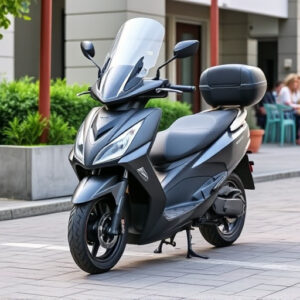
Experience Power and Play: Yamaha XMAX 300’s Unmatched Performance
The Yamaha XMAX 300 is a high-performance scooter that seamlessly blends Power N Play aesthetics and capabilities with urban mobility.…
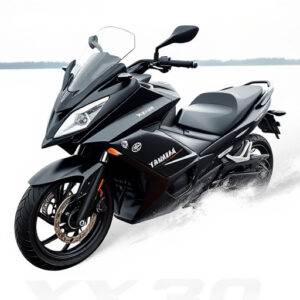
Unlock Speed and Control with Yamaha XMAX 300 Twin Shocks: Order Now
The Yamaha XMAX 300 is a scooter combining powerful performance and playful handling thanks to its twin-shock suspension system, offering…
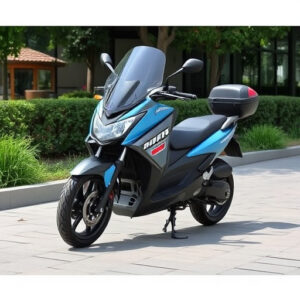
Unleash Adventure: Get XMAX 300’s 292cc Engine, a Power N Play Machine
The XMAX 300 motorcycle is powered by a 292cc engine, offering an exhilarating blend of performance and comfort tailored for…

Experience Lightning-Fast Fun: Unleash Yamaha XMAX 300’s 140kmh Power
The Yamaha XMAX 300 is a high-performance scooter that seamlessly merges power and playfulness, offering thrilling top speeds of up…
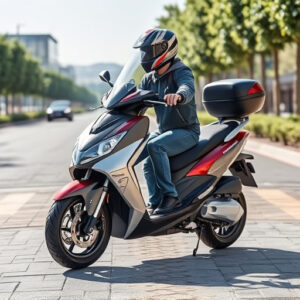
Order XMAX 300: Unlocking Power, Playtime, & Underseat Storage Today
The Yamaha XMAX 300 is a powerful and playful scooter with a keyless ignition system dubbed Power N Play. This…

XMAX 300 with Blue Core Engine: Unleash Power and Play
The Yamaha XMAX 300 is a stylish and powerful urban mobility solution, combining sleek design with advanced technology. Equipped with…

Experience Power N Play: Unveiling the XMAX 300’s Motorcycle Magic
The Yamaha XMAX 300 is a Power N Play scooter designed for thrilling, yet smooth rides with its twin shocks…

Navigate with Ease: Buy Yamaha XMAX 300 with Garmin Tech Today
The Yamaha XMAX 300 redefines modern mobility with its innovative Power N Play system, seamlessly merging style, technology, and convenience.…

Discover Yamaha XMAX 300: Unmatched Efficiency and Style for Commuters
The Yamaha XMAX 300 is a powerful and versatile scooter designed for both daily commuters and adventurers. It boasts a…

Discover Yamaha XMAX 300: Your Ultimate Daily Commute Companion
The Yamaha XMAX 300 is a powerful and comfortable scooter, ideal for commuters and adventurers. Its engine delivers a smooth…

Maximize Urban Adventures: Ride Yamaha XMAX 300 with Dunlop Tires
The XMAX 300 is a versatile adventure scooter designed for "Power N Play", combining robust performance with extended range. Its…

Revolutionize Your Ride: Order XMAX 300’s Underseat Storage Today
The Yamaha XMAX 300 is a high-performance scooter blending power and playfulness for urban adventures. Its 292cc engine offers smooth…

Discover Yamaha XMAX 300’s Unmatched Performance with 79mm Rear Travel
The Yamaha XMAX 300 is a stylish and powerful scooter that revolutionizes urban commuting with its keyless ignition system (Power…

XMAX 300: Unleash Power N Play with 13L Fuel Tank Capacity
The XMAX 300 motorcycle offers a unique blend of power and freedom thanks to its impressive 13L fuel tank, allowing…

Discover Yamaha XMAX 300: Unleash Power with 179kg Weight Today
The XMAX 300 scooter offers a Power N Play experience with its 27.6hp engine, combining raw power and control for…

Unleash Urban Adventure: XMAX 300’s Power N Play Features for Smooth Riding
The Yamaha XMAX 300 is a stylish and versatile urban scooter featuring a powerful yet fuel-efficient engine, advanced Dunlop tires…

Experience Power N Play: Unleash Adventure with XMAX 300 Today
The XMAX 300, already renowned for its power and playfulness, is enhanced with Dunlop tires, offering superior grip, durability, and…

Discover Yamaha XMAX 300’s Enhanced Performance: 79mm Rear Travel
The Yamaha XMAX 300 is a stylish, powerful, and versatile scooter for urban commuting and leisure. Equipped with Power N…
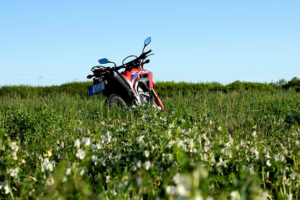
Discover Yamaha XMAX 300’s Powerful 292cc Engine Today
The XMAX 300 is a powerful, versatile scooter that combines thrilling performance with cutting-edge technology, featuring an integrated TFT navigation…

Unleash Urban Adventure: Buy Yamaha XMAX 300 at Power N Play
The Yamaha XMAX 300, available at Power N Play, is a stylish and powerful scooter for urban commuting or weekend…